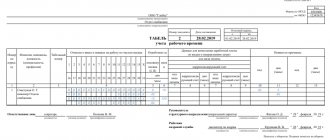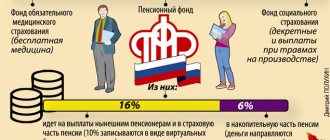The enterprise has labor regulations approved by a special local act, which all company employees must comply with. If you violate them and are absent during your working hours, then this offense is a disciplinary offense, which provides for the dismissal of the employee for absenteeism. But for this, a memo must be drawn up about the employee’s absence from the workplace.
Who draws up the document?
An official or report on absenteeism must be drawn up by a person who, by virtue of his position, exercises direct control over the work process and employees:
- Production workshop foreman.
- Senior nurse in a medical institution.
- Senior manager.
- Secretary who keeps time sheets.
- Manager of a store, warehouse.
- Head of department.
- And other similar officials.
Functions of memos
The main purpose of reports is to inform management and encourage further action. The specific functions that a memorandum can perform may be different:
- resolving a problem of a production or administrative nature;
- rationalization proposals for improving production activities;
- conveying to management an opinion on the decision made (most often this is how disagreement is expressed);
- explaining your position in the event of a conflict with colleagues or immediate superiors;
- regular progress reports;
- complaints in case of employees’ refusal to carry out the orders of their immediate superiors;
- proceedings regarding improper delegation of responsibilities;
- bringing to the attention of management information about violations of labor discipline and regulations;
- information about incidents that resulted or could result in material loss or physical harm;
- positive aspects that require management's reaction.
Target
In a large enterprise, it is unacceptable to simply tell the boss that such and such an employee was not there yesterday. Everything related to overtime, time off, absenteeism, sick leave must be reflected in the reporting documentation. Therefore, absenteeism must also be documented .
Important! The purpose of drawing up a memo about an employee’s absence from the workplace is to record this fact, the measures taken, and transfer this information to higher management. The head of the enterprise will decide what disciplinary measures will be taken against this employee.
You can find out more about what a memo is and how this document is drawn up according to GOST here.
What is a memo?
A memo is an important document of internal communication; no influential institution can do without it. For the normal functioning of the organization, a sample memorandum should be at hand for almost all employees. Its difference from a memo is that it has a hierarchical orientation, that is, it always comes from a subordinate to higher management. The note is an informational document, which is written in order to promptly inform the authorities of a higher authority or another structural department about events affecting the stability of the management system at the enterprise.
The report has legal force, because its purpose is not only to inform the management of the organization, but also to encourage them to make a certain decision on the announced situation. The document is drawn up on the personal initiative of the employee or at the request of the manager. The note code according to the management documentation classifier is 0286041 according to OKUD. The document must clearly describe the problem that has arisen, and since it has legal force, it must be free of spelling and legal errors.
Definition of a memo
The document not only sets out the incident in detail, but also writes a conclusion outlining options for resolving the situation. After this, the manager is obliged to study the document and impose his resolution. Subsequently, this resolution serves as the basis for the approval and implementation of various measures (imposition of penalties, issuance of incentives, etc.). Thus, a memo is an element of feedback between a manager and a subordinate.
Primary requirements
The explanatory note about absenteeism must include the following information:
- The name of the department, division in which the paper is compiled.
- The title is “Official (report) note.”
- Date of preparation and document number.
- Full name and position of the person being addressed.
- Full name and position of the absentee worker.
- Full name and position of the compiler.
- Date and time of the employee's absence. If the employee was absent for the entire working day, indicate the time from which and until what time he should have been in his place.
- Measures taken. For example, calling an employee to find out the reason for absence.
- The conclusion includes conclusions about the incident and a proposal for disciplinary action.
The presentation must adhere to a strict business style.
Specifics of the report
This type of official information, unlike other types of notes, is addressed exclusively to higher positions, authorized persons, superiors - that is, people who make real decisions. The information contained in such a note is precisely intended to bring to life some kind of action, which one depends on the purpose of the report and the information and proposals contained in it.
Difference from a memo
The report is intended to convey information “vertically”, and the memo transmits information between employees of equal status. Unlike a report, a memo is not provided for by OKUD. Written by the employee of his own free will.
Difference from an explanatory note
The explanatory note is also sent “vertically”, but is fundamentally different in the purpose stated in the very title of the document: to explain this or that current situation in order to resolve the issue of the employee’s guilt or innocence. That is, as in the report, a representative of a higher position is encouraged to make a decision, but this decision concerns only disciplinary violations. OKUD has its own code, just like the report. Written at the request of management.
NOTE! The memorandum, depending on the circumstances, can be written on one’s own initiative or at the direction of authorized persons. This document has legal force.
How to compose?
In content and form, a memo resembles a statement . Therefore, its structure is similar.
In the upper right corner you need to create a “header” indicating the data to whom and from whom.
Example:
“To the Director of OJSC “Kvadrat” Kondratyev Kondrat Kondratovich From the senior manager Nikolaev Nikolay Nikolaevich.”
The name of the structural unit is written in the upper left corner.
Example : “Sales department”.
Heading in the middle. The top line is a memo, the bottom line is about the employee’s absence from the workplace. Both lines must be capitalized .
After the heading “Official (report) note” write the date and document number. Next, the fact of absence is stated, with a clear time period, and the clarified reasons for the absence. Example: “I would like to bring to your attention that an employee of the sales department, Petrov Petrovich, was absent from the workplace on May 5, 2017, for the entire working day from 8 a.m. to 6 p.m. I took measures to find out the reason for the absence in the form of a call to Petrov’s mobile phone. When he answered, he said that there was a water supply failure in his apartment, due to which he was forced to stay at home.”
Advice! After presenting the information, the compiler suggests taking the necessary measures in his opinion.
Example : “Please take the stated facts into account and reprimand the sales department manager P.P. Petrov.”
Mitigating circumstances - the employee explained the reason for his absence with a valid reason, and also, if this happens for the first time, there are no other complaints. In this case, the originator may request that no disciplinary action be taken.
Example : “I ask you not to take disciplinary measures against the sales manager Petrov P.P., since such an incident happened for the first time, and the authenticity of the stated reason for absence is confirmed by a certificate from the Housing Office about the breakdown of the water supply system at Petrov’s residence address during the specified time of his absence.”
Aggravating facts - repeated or multiple absences from work, complaints about the performance of duties, etc. Such circumstances may become the basis for a reprimand, penalties, and even dismissal.
Example : “A similar situation has happened for the 4th time in the last six months, the previously indicated reasons for absence were not confirmed, and such behavior of P.P. Petrov. leads to disruption of work plans and losses. In this regard, I ask you to fire sales manager P.P. Petrov. in accordance with paragraph 6 of Art. 81 of the Labor Code of the Russian Federation for absenteeism.”
At the end, the compiler indicates the position, personal data and signs . Between the statement of the fact of absenteeism and the request for the application of measures, there may be a paragraph with an analysis of the situation. Example: “In the last 3 months Petrov P.P. I was often late for work and arrived with traces of a hangover. From which I can conclude that Petrov’s absence from work is associated with excessive alcohol consumption and has no valid reasons.”
You can find out about the rules by which an official memo is drawn up, as well as see a sample document, in a separate material, and in detail about the rules for preparing official memos according to GOST, as well as what requirements apply to their writing, read here. .
Legal regulation of employee absence from the workplace
Part one of Article 189 of the “Labor Code of the Russian Federation” dated December 30, 2001 N 197-FZ provides the formulation of labor discipline, which is mandatory for all employees to obey the rules of conduct defined in the Labor Code of the Russian Federation.
Part one of Article 192 of the “Labor Code of the Russian Federation” dated December 30, 2001 N 197-FZ provides for disciplinary sanctions for committing an offense, such as: reprimand, reprimand, dismissal on appropriate grounds.
Article 193 The procedure for applying disciplinary sanctions “Labor Code of the Russian Federation” dated December 30, 2001 N 197-FZ reflects the deadlines for disciplinary sanctions.
Subparagraph “a” of paragraph 6 of Article 81 of the “Labor Code of the Russian Federation” dated December 30, 2001 N 197-FZ lists the grounds for termination of an employment contract at the initiative of the employer, even for a one-time case, for the following offenses: gross violation of labor duties (or labor discipline , terms of the employment contract, etc.), it also reflects the time that will be considered absenteeism (more than 4 hours in a row during a shift).
Also, the absence of an employee and punishments for such offenses can be reflected in a collective agreement, agreement, local regulations, or an employment contract.
How is a document about an employee’s absence from work prepared?
The organization can stock up on specially designed printed forms for filling out, but you can write a memo on an A4 sheet, adhering to the necessary rules. The document is signed by the originator himself; a seal is not required unless otherwise stated in the charter of the enterprise. However, such documentation is recorded in the register of the secretary or the department itself.
Attention! Upon registration, the report is assigned a registration number.
Deadlines
A memo about absenteeism is not drawn up on the day of absenteeism ; first, absenteeism is recorded in the time sheet. The employee is notified of this and given 2 days to provide an explanation for his absence. During this time, a citizen can prepare supporting documents, for example, a certificate from the housing office stating that there was an accident in his apartment, and work was carried out to eliminate it (for details on how to write a memo to the director, as well as how to correctly draw up an explanatory note, read this article).
The certificate must indicate the time of the incident. If after 2 days the employee has not provided explanations and evidence, then a memo is issued indicating all the facts.
Example
Nothing explains it better than a clear example . For this purpose, a form for such a document was drawn up in compliance with all rules and appropriate content.
Repair shop To the head of the repair shop Borisov Boris Borisovich From the shift foreman Egor Egor Egorovich
Service memo No. 123 dated December 15, 2017 On the absence of an employee from the workplace
I would like to bring to your attention that the mechanic of the repair shop, Sergey Sergeevich Sergeev, was absent from work on December 12, 2017, for the entire work shift from 7:00 to 15:00. When trying to contact him by phone, Sergeev did not pick up the phone. The next day, Sergeev went to work on time and provided a certificate from the traffic police stating that he was involved in an accident and was detained until the circumstances were clarified until 13:00. Since there was little time left until the end of the shift, Sergeev decided not to go to work at all.
Due to the fact that the repair shop mechanic Sergeev S.S. did not answer calls, and also did not take measures to warn me about the reason for his absence, I ask you to reprimand him.
Shift foreman Egorkin E.E. (signature)
Reply to the service
The director (chief) can write his decision directly on the report form. This may be either agreement with the proposal of the originator, or refusal and the use of other measures. What is written is certified by a signature with a transcript.
Example of a positive answer : “Prepare an order to reprimand S.S. Seregin. 12/15/2017 Borisov B.B. (signature)".
Example of refusal : “Disciplinary measures against S.S. Seryogin.” not apply, since documents were provided regarding a valid reason for his absence. 12/15/2017 Borisov B.B. (signature)".
We talked about how to correctly write a response to a memo here.
Despite the absence of mandatory rules in the laws for correspondence through official memos, it must be drawn up in compliance with the norms of business communication, the rules of the Russian language and traditional requirements for business papers. On how to correctly draw up a contract for salary increases, bonuses and de-bonuses for employees, promotions, additional payments for increasing the volume of work, writing off material assets, fixed assets, issuing funds, combining positions, car repairs, recalculation, payment and deduction of wages - read on our website.
Types of memos
They come in two types:
- Internal - written at the request of the employee or his boss in order to increase the efficiency of the company. The author signs here. Since the document is considered internal, then registration is carried out on A4 paper.
- External - sent to higher authorities. This type is signed only by the head of the company, and it is printed on company letterhead.
In both cases, the date is set on the day of writing and signing.
According to the content, the notes are divided into:
- Informational - as a rule, they are compiled regularly; they provide detailed information about the methods and features of the work. They can also be used to convey ideas for improving the work process to management.
- Reporting - report on the results of an executed order in a specific period. They are usually composed of the lowest level employees.
- Initiative - those where the employee proposes to the management to make a certain decision in connection with specific events - violations, downtime, etc.
Internal memo
Often, among the reports, you have to write “repressive” notes to your superiors, calling out employees as boors and lazy people. They should be drawn up especially carefully, because even the slightest flaw can lead to trouble in the future. Violation of discipline is grounds for financial penalties; only for this purpose, compelling arguments must be given in the document. An incorrectly formulated document can be filed in court, complaining that management is maliciously infringing on the rights of a specialist. Therefore, it is important to know how to write a memo correctly.
Classification of memos
If we consider this type of official documentation from different positions, we can identify several of the most frequently used types of reports.
- . Depending on what information the report contains, we can distinguish:
- Destination. Its type depends on who exactly the report is sent to:
- external - sent to the management of another institution;
- internal – addressed to higher-ups within the organization.
- Data. Information brought to the attention of management that requires immediate action is often negative. But it happens that you need to notify your superiors about the employee’s special successes. The type of report depends on the situation described in it:
- violation of labor regulations and discipline;
- failure to perform or insufficient performance of official duties;
- allowing insults to honor and dignity, unacceptable behavior, provoking conflicts;
- outstanding achievements worthy of awards, etc.
FOR YOUR INFORMATION! Internal and external reports are characterized by a significant difference in design: for the latter, the organization’s form is required.
Manager's actions
Any memo is created for the purpose of informing management. Its consideration is the responsibility of the director, his deputy, the head of the department authorized to do so by internal documents, charter, etc.
Based on the results of the proceedings on the facts set out in it, the head makes a certain decision. He sets out his will in a resolution, which subsequently serves as the basis for the execution of the manager’s decision.
A disciplinary sanction is imposed only after receiving an explanation from the citizen against whom the notice was drawn up. Refusal to provide them is not an obstacle to taking response measures, but this refusal must be formalized in a separate act.
It is also recommended to draw up an investigation into the circumstances of the incident in order to obtain the necessary evidence in case of subsequent proceedings with the participation of judicial authorities (the disciplinary sanction can be challenged by the employee).
The penalty is valid for a year. Before the expiration of this period, it can be removed by decision of management. Moreover, the initiative for withdrawal can come from both the employee himself and his immediate supervisor, as well as a representative body or the head of the organization himself.







